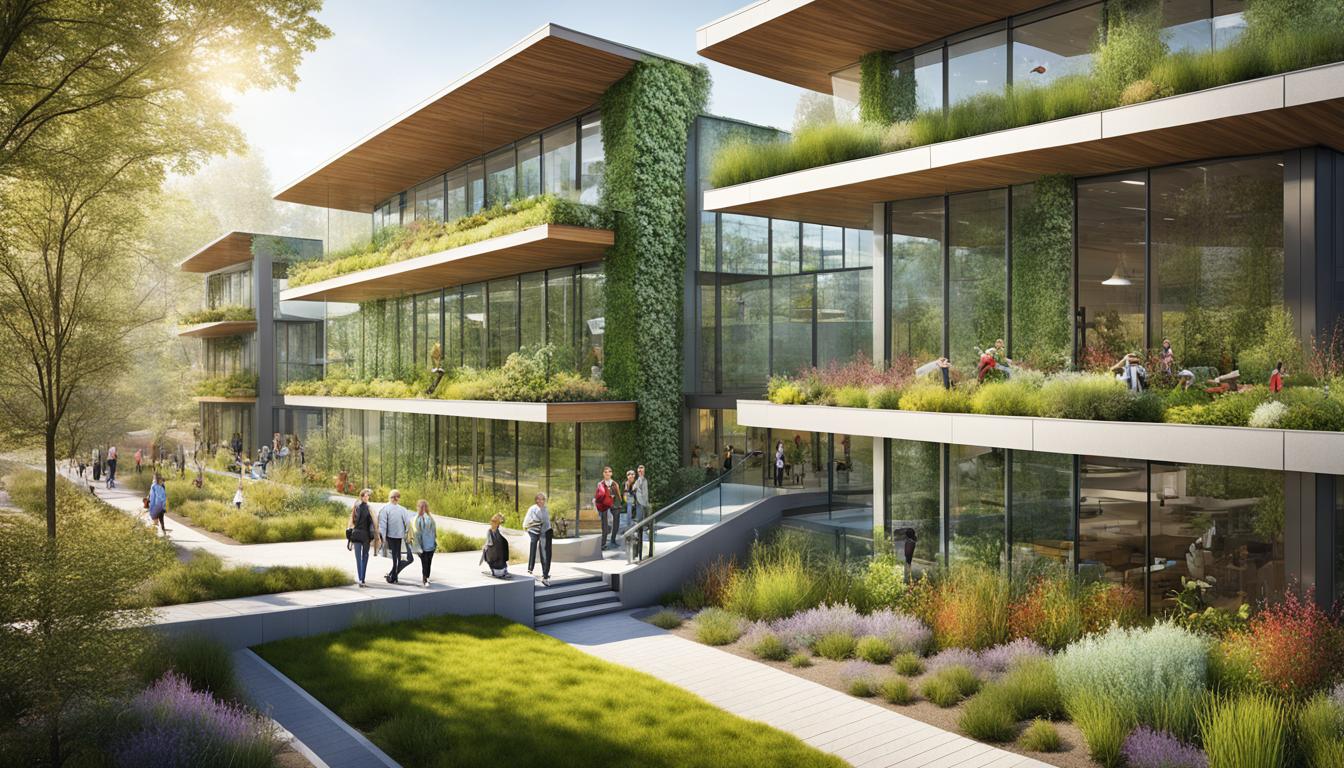
As sustainability becomes a key focus in the world of architecture, professionals are seeking innovative ways to design buildings that not only benefit humans but also the environment. The concept of sustainable architecture goes beyond energy efficiency and resource conservation, encompassing a holistic approach that integrates ecological resilience and biodiversity into the built environment. By incorporating nature-positive design principles, architects can create structures that harmonize with nature, promote biodiversity, and contribute to a healthier and more sustainable planet.
Let’s dive into the realm of sustainable architecture and explore the architectural solutions that embrace ecological resilience. But first, let me share a relatable story that sets the stage for our exploration.
Meet Emily, an aspiring architect with a deep passion for environmental sustainability. She had always dreamt of designing buildings that not only looked visually stunning but also left a positive ecological impact. During her years of study, Emily discovered the power of sustainable architecture and its ability to enhance biodiversity and create a more resilient built environment.
One summer, Emily embarked on a journey to a remote village surrounded by lush forests and vibrant wildlife. The village, once harmoniously intertwined with nature, had recently experienced the devastating effects of urbanization. Buildings had replaced natural habitats, leading to endangered species’ displacement and a decline in biodiversity.
Emily felt a sense of responsibility and a calling to make a difference. Inspired by the stunning surroundings, she decided to dedicate her career to designing buildings that not only coexisted with nature but actively contributed to its restoration and protection.
Throughout her architectural journey, Emily explored various eco-friendly construction practices, resilient building materials, and climate-responsive designs. She discovered that sustainable architecture was more than just a trend; it was a powerful tool to combat climate change and enhance the well-being of both humans and the planet.
Now, armed with her newfound knowledge and relentless passion, Emily is ready to share the wonders of architectural solutions for ecological resilience with the world.
Key Takeaways:
- Sustainable architecture integrates ecological resilience and biodiversity into the built environment.
- Nature-positive design principles promote environmental sustainability and enhance biodiversity.
- Architects have a role in creating structures that work in harmony with nature.
- Eco-friendly construction practices, resilient building materials, and climate-responsive designs contribute to a healthier and more sustainable planet.
- Sustainable architecture not only benefits the environment but also improves the well-being of humans.
Understanding Biodiversity and its Benefits
Biodiversity refers to the variety of life on Earth and is crucial for maintaining a healthy and sustainable environment. It encompasses the diverse range of species, genes, and ecosystems that coexist and interact within our planet’s ecosystems. Understanding biodiversity and its benefits is essential for appreciating the significance of preserving and promoting it.
Biodiversity plays a vital role in maintaining the balance of ecosystems and providing essential ecosystem services. These services include:
- Air and water purification: Biodiverse ecosystems act as natural filters, cleansing the air we breathe and the water we consume.
- Nutrient cycling: Biodiversity helps in recycling nutrients through biogeochemical cycles, sustaining the overall health of ecosystems.
- Climate regulation: Biodiverse ecosystems contribute to climate regulation by absorbing greenhouse gases and mitigating the impacts of climate change.
Architectural practices that promote biodiversity contribute to the sustainable environment we strive to achieve. By designing and constructing buildings that integrate with the natural environment, we can create a harmonious coexistence between human-made structures and the ecosystems they inhabit. Such architecture aims to minimize ecological impact and maximize the positive ecological influence on surrounding areas.
Architecture that promotes biodiversity creates a balance between human-made structures and the natural environment, leading to a more sustainable and healthy coexistence.
Consideration of biodiversity in architectural design involves incorporating elements that support and enhance local ecosystems. These elements can include green spaces, native plantings, and other features that provide habitats for various species. By doing so, architects contribute to the preservation of biodiversity and the restoration of healthy and sustainable environments.
Understanding the importance of biodiversity and its benefits is the first step towards integrating ecological considerations into architectural practices. By prioritizing sustainability and embracing nature-positive design principles, architects have the power to shape a better future for both humans and the planet we call home.
Biodiversity: A Key Player in a Sustainable Environment
“The richness and diversity of life on Earth are fundamental to the complex life-support systems that we depend on.” – Sir David Attenborough
Biodiversity ensures the resilience and sustainability of our ecosystems. By acknowledging its significance and taking active steps to protect and enhance it, we can secure a sustainable future for generations to come.
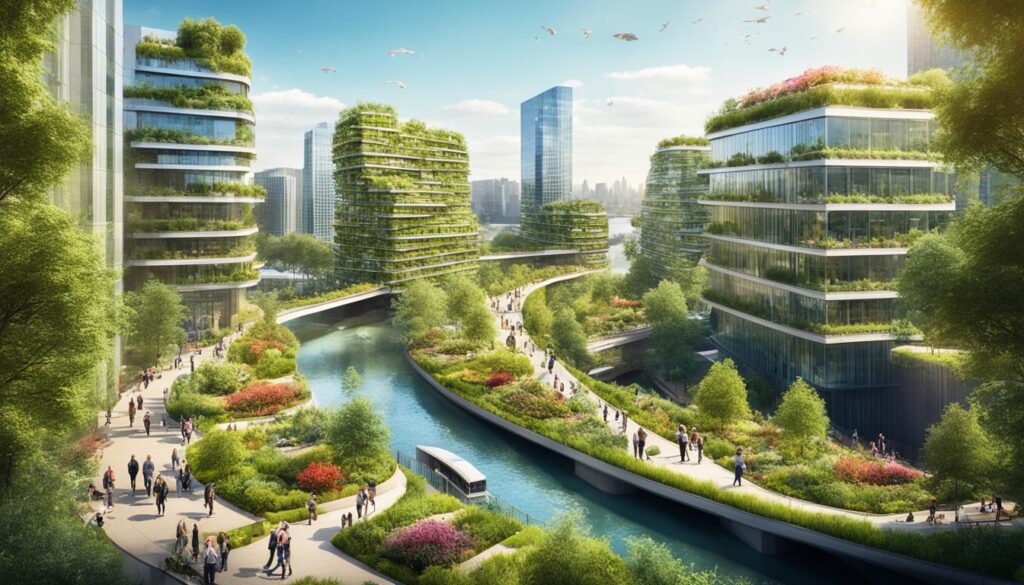
The Role of Architecture in Biodiversity Conservation
Architecture plays a crucial role in conserving biodiversity by designing buildings and landscapes that support and enhance local ecosystems. By incorporating features that prioritize biodiversity conservation, architects can create sustainable structures that contribute to the preservation of wildlife habitats and the enhancement of local ecosystems.
One key approach is the integration of green roofs and living walls. Green roofs, covered with vegetation, provide valuable habitat for plants and insects, helping to restore and maintain biodiversity in urban environments. These rooftop gardens not only support local flora and fauna but also offer additional benefits to the buildings they are installed on, such as improved insulation, reduced stormwater runoff, and mitigated urban heat island effect.
Living walls, vertical gardens installed on the exterior or interior of buildings, also offer significant opportunities for biodiversity conservation. These walls provide habitat for a variety of plants and insects, contributing to the ecological balance in the surrounding area. They also enhance the aesthetic appeal of buildings while improving air quality and reducing energy consumption by providing natural shading and cooling during warmer months.
In addition to green roofs and living walls, architects can promote biodiversity conservation by maximizing natural light and ventilation in building design. By incorporating large windows and skylights, buildings can reduce the reliance on artificial lighting and ventilation systems, resulting in reduced energy consumption. This not only benefits the environment but also creates healthier indoor spaces, improving the overall well-being of occupants.
Sustainable material choices and construction practices also play a significant role in biodiversity conservation. By opting for environmentally friendly and locally sourced materials, architects can minimize the environmental impact of their projects. They can also prioritize using recycled or repurposed materials, reducing waste and promoting a circular economy. Furthermore, construction practices that minimize disturbance to the natural environment, such as careful site planning and proper waste management, contribute to the overall preservation of local ecosystems.
Key Points
- Architectural design can contribute to biodiversity conservation by incorporating features such as green roofs and living walls.
- Green roofs and living walls provide habitat for plants and insects, improve insulation, reduce stormwater runoff, and mitigate the urban heat island effect.
- Maximizing natural light and ventilation in building design reduces energy consumption and creates healthier indoor spaces.
- Sustainable material choices and construction practices minimize the environmental impact of building projects.
By considering these factors, architects can play a significant role in biodiversity conservation, helping to protect and enhance local ecosystems. The integration of green infrastructure, sustainable materials, and thoughtful design practices can contribute to a more sustainable and resilient built environment for both humans and wildlife.
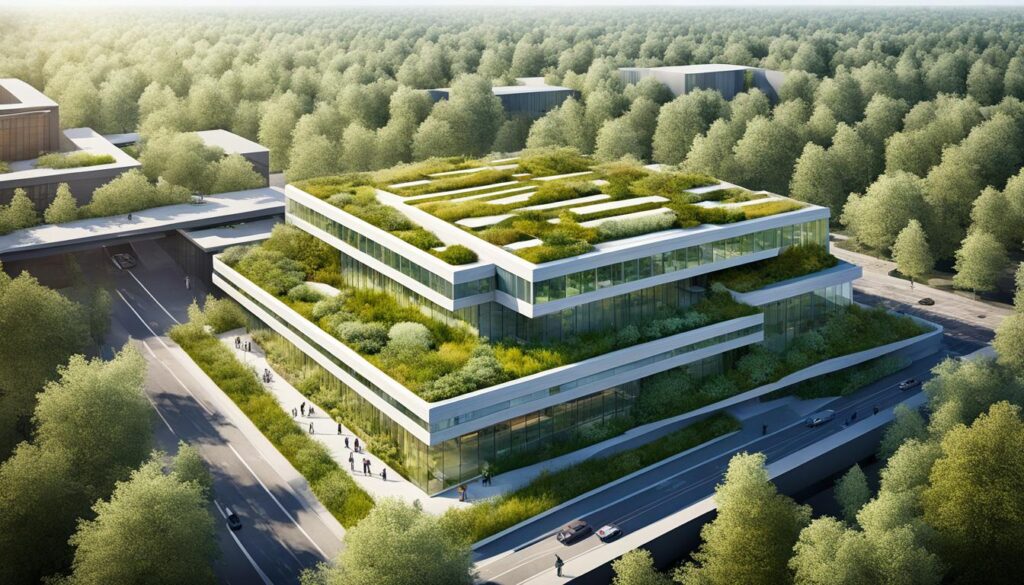
The Impact of Architecture on Local Ecosystems
Architectural design plays a significant role in shaping local ecosystems and can have both positive and negative impacts on the environment. By understanding and considering the ecological consequences of our designs, architects have the power to minimize negative effects and promote biodiversity.
One key aspect to consider is the alteration of natural drainage patterns. Poorly designed buildings and infrastructure can disrupt the flow of water, leading to increased flooding or droughts in local ecosystems. By incorporating sustainable drainage systems into our designs, architects can mitigate these effects and ensure the preservation of natural drainage patterns.
The migration patterns of birds and other animals can also be disrupted by architectural development. As buildings and structures obstruct their traditional routes, wildlife populations may suffer from habitat loss and fragmentation. To prevent this, architects can create wildlife corridors and green spaces that allow for the safe movement of animals, promoting biodiversity and maintaining healthy ecosystems.
Architecture can also contribute to habitat fragmentation, which occurs when natural areas are divided or isolated by man-made structures. This fragmentation can lead to the loss of biodiversity and ecological imbalance. To combat this, architects can incorporate design features that connect fragmented habitats, such as green bridges or wildlife-friendly landscaping, fostering the continuity of ecosystems and supporting diverse species.
Lastly, architecture has a significant impact on pollution and greenhouse gas emissions. Construction and operation of buildings contribute to pollution through energy consumption and waste production. By prioritizing sustainable materials, energy-efficient design, and renewable energy sources, architects can reduce pollution and minimize the environmental footprint of their projects, contributing to a healthier environment and combating climate change.
In summary, the impact of architecture on local ecosystems is far-reaching, affecting drainage patterns, migration patterns, habitat fragmentation, and pollution levels. By taking these factors into account, architects can design with the environment in mind, minimizing negative effects and promoting biodiversity, thus creating a more sustainable future for all.
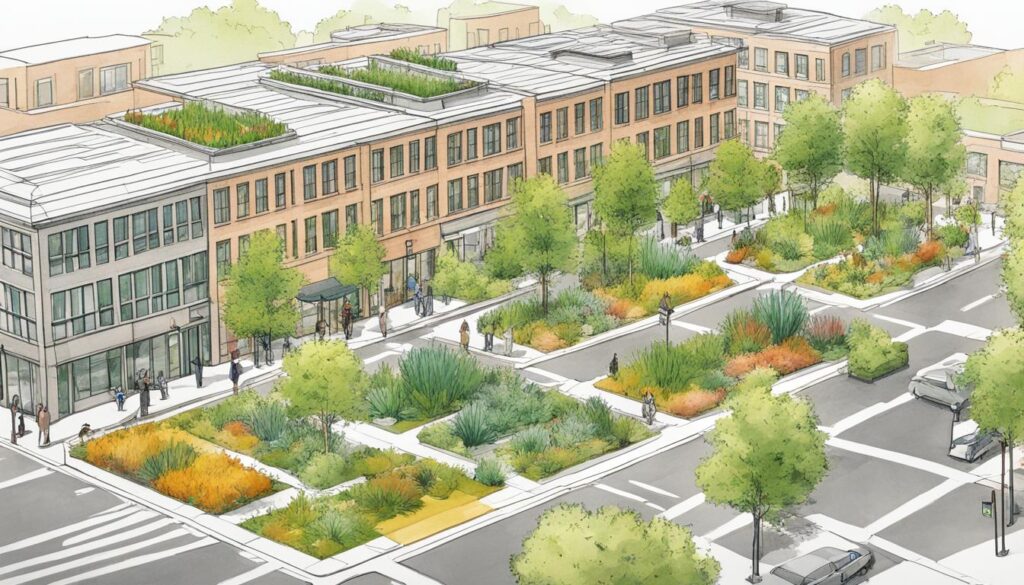
Incorporating Biodiversity in Urban Architecture
Urban architecture often faces challenges in maintaining biodiversity due to the prevalence of hard surfaces and limited green spaces. However, architects have the power to create designs that promote biodiversity within urban environments. By incorporating elements such as green roofs and living walls, architects can provide essential habitats for wildlife, enhance urban ecosystems, and contribute to a more sustainable future.
Green roofs consist of vegetation and soil layers installed on the rooftops of buildings, providing a range of benefits for both the environment and the community. They act as effective wildlife habitats, offsetting the loss of green space caused by urbanization. Green roofs also contribute to the reduction of the urban heat island effect, as they absorb and release less heat compared to conventional rooftops. Furthermore, they help improve air quality by absorbing airborne pollutants and producing oxygen.
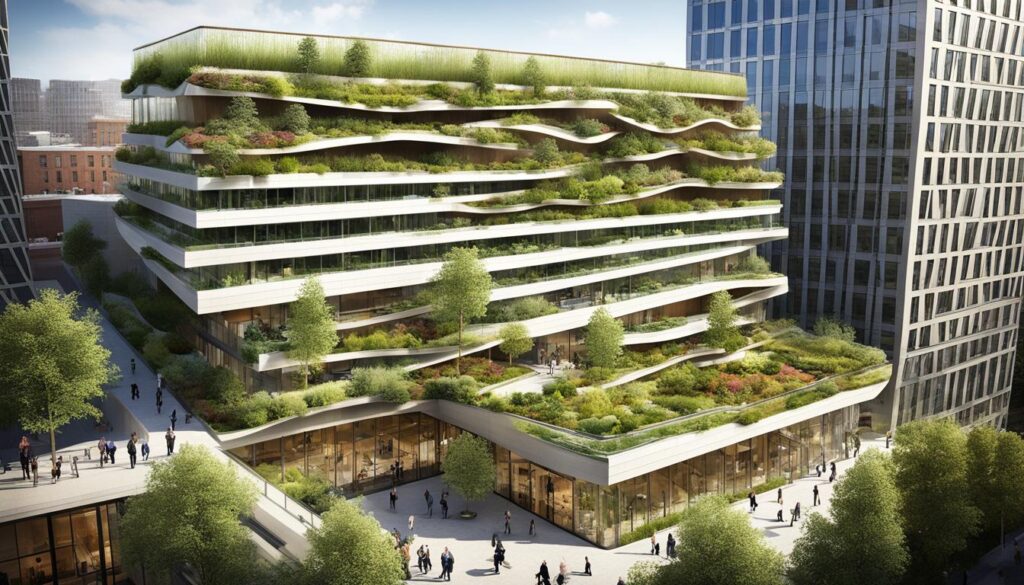
Living walls, also known as vertical gardens, are another feature that can be incorporated into urban architecture to promote biodiversity. These vertical structures consist of plants growing in modules or containers attached to walls, facades, or fences. Living walls not only provide habitat for birds, insects, and other small animals but also offer aesthetic and psychological benefits to the surrounding community. They enhance the visual appeal of buildings, improve air quality, and provide a connection to nature in urban environments.
Maximizing natural light and ventilation in urban architecture further contributes to promoting biodiversity. By incorporating well-designed windows, skylights, and open spaces, architects can create buildings that maximize the penetration of natural light and fresh air. This approach reduces the reliance on artificial lighting and mechanical ventilation systems, conserving energy and improving the indoor environment. Additionally, natural light and ventilation enhance the well-being and productivity of building occupants.
Architects’ material choices play a significant role in promoting biodiversity in urban architecture. By selecting sustainable materials with low environmental impact, architects can contribute to a more sustainable built environment. Sustainable materials are often sourced and manufactured using eco-friendly processes, reducing carbon emissions and minimizing the depletion of natural resources. Additionally, architects can prioritize using materials that can be recycled or repurposed, reducing waste and minimizing the overall environmental footprint of buildings.
By incorporating green roofs, living walls, maximizing natural light and ventilation, and prioritizing sustainable material choices, architects can navigate the challenges of urban architecture and promote biodiversity within cities. These nature-positive architectural approaches not only create habitats for wildlife but also contribute to a healthier and more sustainable urban environment.
Innovative examples of nature-positive urban architecture
When it comes to nature-positive urban architecture, two remarkable examples stand out: the Bosco Verticale in Milan, Italy, and the Namba Parks building in Osaka, Japan. These architectural marvels showcase the possibilities of integrating nature into urban environments while promoting biodiversity and providing habitats for local wildlife.
Bosco Verticale
The Bosco Verticale, or Vertical Forest, is a stunning display of nature-positive urban architecture. Designed by Stefano Boeri Architetti, this residential complex features two towers that host over 900 trees and more than 2,000 plants. The lush vegetation creates a vertical forest that improves air quality, reduces pollution, and provides habitat for birds and insects. The integration of nature into the building design has earned Bosco Verticale numerous accolades and recognition as an environmentally sustainable landmark.
Namba Parks Building
The Namba Parks building in Osaka, Japan, takes an innovative approach to nature-positive architecture. Designed by The Jerde Partnership, this mixed-use development incorporates a series of rooftop gardens and terraces that seamlessly blend green spaces with modern design. These elevated gardens provide abundant habitats for local wildlife, creating a haven in the midst of the urban landscape. The Namba Parks building not only adds beauty to the cityscape but also promotes biodiversity and contributes to the well-being of the surrounding ecosystem.
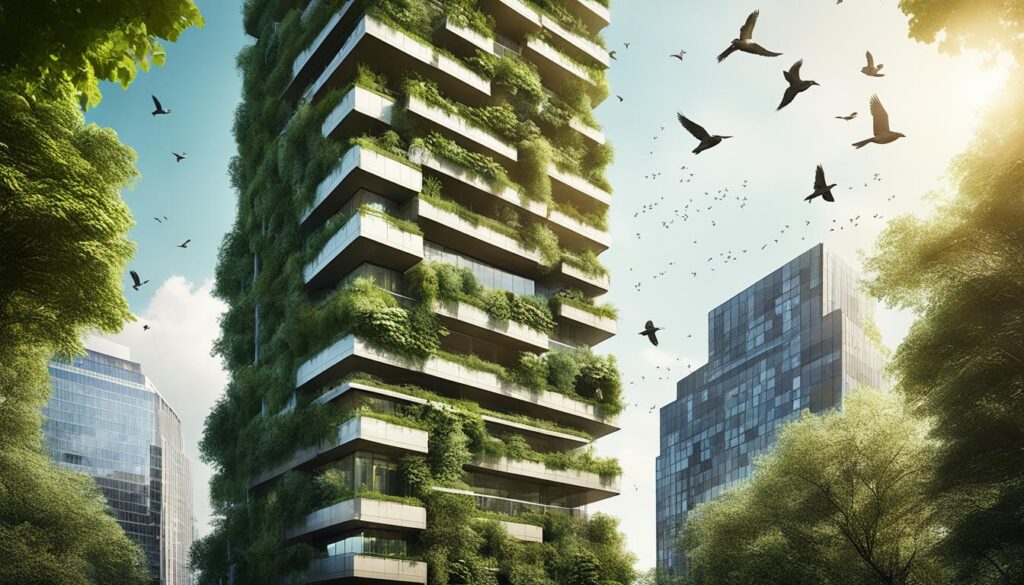
These inspiring examples of nature-positive urban architecture demonstrate that it is possible to create sustainable and biodiverse environments within the confines of a city. By incorporating green spaces, trees, and plants into buildings, architects can enhance the well-being of both humans and the natural world. These innovative designs serve as a reminder that the coexistence of nature and urban life is not only feasible but also essential for a healthier and more harmonious future.
Green Roofs and Living Walls
Green roofs and living walls are innovative architectural features that offer numerous benefits for both the environment and the urban landscape. These features not only enhance the aesthetic appeal of buildings but also contribute to biodiversity conservation and create a healthier living environment.
Green roofs are characterized by the incorporation of vegetation on building roofs, providing habitat for plants and animals. By covering rooftops with vegetation, green roofs mitigate the urban heat island effect by reducing heat absorption and improving thermal insulation. This helps to regulate the temperature of buildings and surrounding areas, resulting in energy savings and a more comfortable urban environment.
In addition to their cooling properties, green roofs also improve air quality by capturing airborne pollutants and producing oxygen. The vegetation on green roofs acts as a natural filter, removing pollutants and particulate matter from the air, thereby reducing the prevalence of respiratory problems and enhancing the overall well-being of urban dwellers.
Another significant benefit of green roofs is their ability to reduce stormwater runoff. The vegetation on green roofs absorbs rainwater, slowing down the rate at which water enters the drainage system. This helps to prevent flooding, reduce the strain on sewer systems, and minimize water contamination from pollutants that would otherwise be washed away.
Similarly, living walls, also known as vertical gardens, provide a host of environmental advantages. These vertical structures covered in vegetation not only enhance the visual appeal of buildings but also enhance biodiversity by creating habitats for birds, insects, and other small animals. Living walls contribute to the overall ecological balance by incorporating nature into urban spaces.
Living walls also offer numerous practical benefits, including thermal regulation and noise reduction. The vegetation on living walls helps to insulate buildings, reducing the energy required for heating and cooling. Additionally, the plants absorb sound, providing a natural buffer against noise pollution and creating a quieter and more pleasant living or working environment.
Design Considerations for Green Roofs and Living Walls:
- Select appropriate plant species that are suitable for the climate and local conditions.
- Ensure proper water retention systems to support plant growth and prevent water runoff.
- Implement effective maintenance practices to ensure the longevity and vitality of the vegetation.
With thoughtful design and implementation, green roofs and living walls can transform urban spaces into thriving ecosystems, promoting biodiversity and improving the overall quality of life for residents. These features not only combat the negative effects of urbanization but also present opportunities for sustainable and nature-positive architectural design.
The Role of Architecture in Promoting Biodiversity
Architects have a responsibility to incorporate ecological design principles to promote biodiversity. This includes using sustainable building materials, designing buildings to provide habitat for specific species, and considering the site and surrounding landscape. By doing so, architects can create buildings that promote biodiversity and the restoration and protection of natural habitats.
Ecological Design
Ecological design is a fundamental principle that architects should embrace in their practice. It involves designing buildings and structures that minimize their impact on the environment and maximize their positive contributions to biodiversity. By incorporating features such as green roofs and living walls, architects can create habitats for plants, insects, and animals, turning buildings into thriving ecosystems.
Sustainable Building Materials
Choosing sustainable building materials is crucial for reducing the environmental impact of construction projects. Architects should prioritize materials that have a minimal carbon footprint, are sourced responsibly, and can be recycled or reused. These materials not only minimize the depletion of natural resources but also contribute to the overall sustainability of the built environment.
Habitat Creation
Architects can go beyond the design of buildings and actively create habitats for specific species. Incorporating features such as bird boxes, bat roosts, and bee-friendly gardens can provide essential nesting and foraging opportunities, supporting the local biodiversity. By considering the specific needs of different species and incorporating them into the design, architects can play a vital role in habitat creation and conservation.
Site and Landscape Design
The site and its surrounding landscape play a significant role in promoting biodiversity. Architects should consider the existing ecological features and incorporate them into their designs. By preserving and enhancing natural elements like trees, water bodies, and native vegetation, architects can create habitats and ecological corridors that connect fragmented ecosystems. This holistic approach considers the larger landscape context and contributes to the overall resilience of biodiversity.
By incorporating ecological design, using sustainable building materials, creating habitats, and considering the site and landscape, architects can champion biodiversity in their projects. Through their work, architects have the power to shape our built environment into one that coexists harmoniously with nature, contributing to a healthier and more sustainable future.
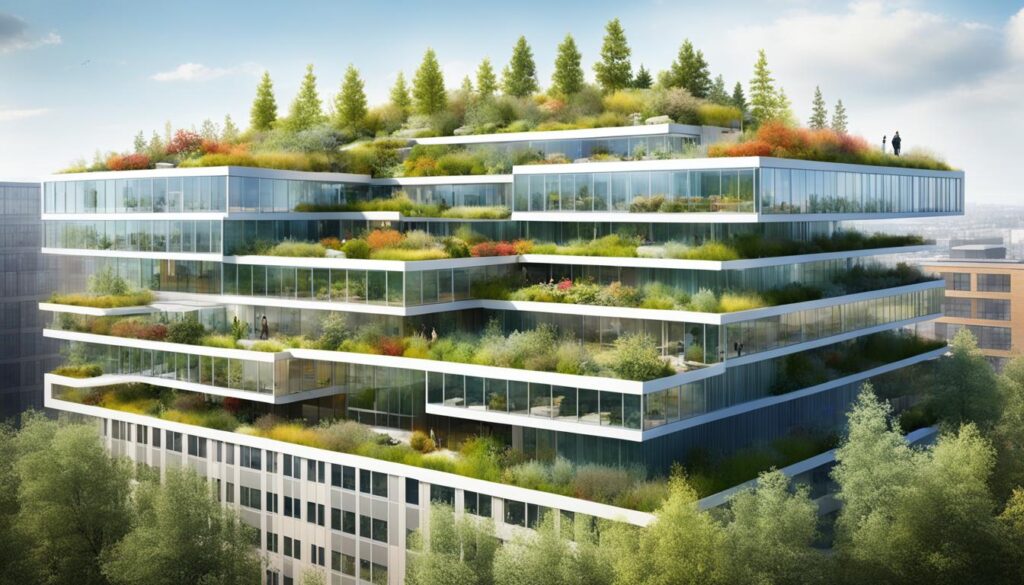
The Role of Landscape Resilience in Architecture
Landscape resilience plays a pivotal role in architecture by ensuring the long-term sustainability and adaptability of buildings and their surrounding environments. This is particularly crucial in highly modified landscapes where the balance between natural and built elements is delicate. Architects have the power to enhance landscape resilience through the integration of features that support biodiversity and promote ecological resilience.
By incorporating green infrastructure and sustainable materials into their designs, architects can create buildings and landscapes that strengthen the resilience of ecosystems. Green infrastructure, such as green roofs and living walls, not only provide habitat for plants and animals but also help mitigate the impacts of climate change, improve air quality, and reduce stormwater runoff.
“The integration of green infrastructure and sustainable materials in architectural design contributes to the resilience of ecosystems.”
Architects who prioritize landscape resilience adopt a landscape-scale ecosystem management approach to their projects. They consider the interconnections and interactions between human-made structures and the natural environment, aiming to minimize the negative impacts and maximize the positive contributions to ecological resilience.
By combining ecological knowledge and innovative design strategies, architects can design buildings that withstand changing environmental conditions, promote biodiversity, and contribute to the overall health and resilience of ecosystems. This approach not only benefits the natural world but also creates healthier and more sustainable living environments for humans.
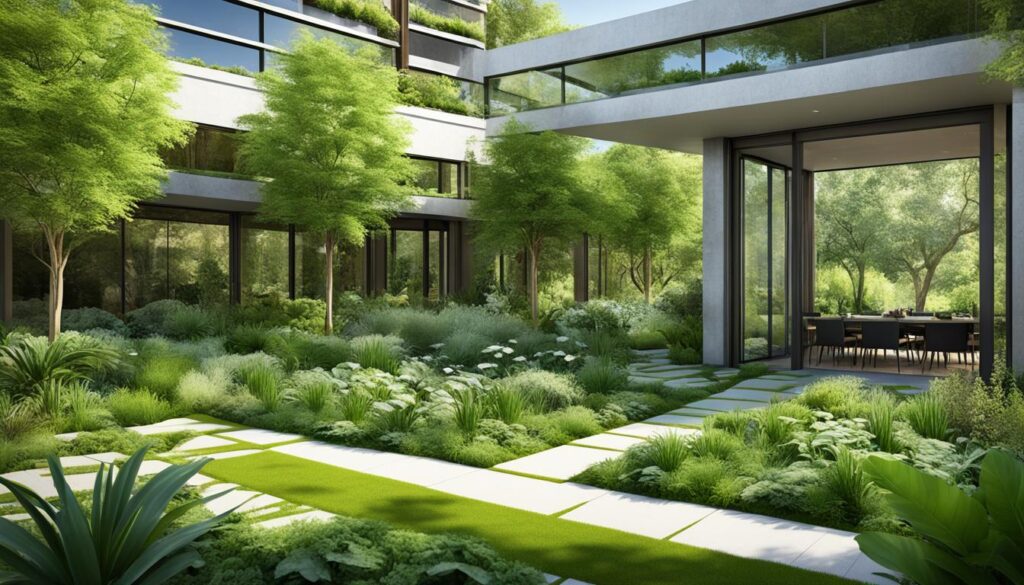
Enhancing Landscape Resilience through Architectural Design
Architectural design can play a significant role in enhancing landscape resilience. Here are some key considerations and strategies:
- Integrating green infrastructure: Incorporating elements such as green roofs, living walls, and rain gardens can enhance biodiversity, improve air and water quality, and reduce the urban heat island effect.
- Sustainable material choices: Using environmentally friendly materials with low embodied energy and long lifespans reduces the ecological footprint of buildings and promotes resource efficiency.
- Site and landscape design: Taking into account the surrounding landscape and its ecological characteristics helps create habitats and corridors for wildlife, minimize habitat fragmentation, and support natural drainage patterns.
- Ecological restoration: Designing buildings and landscapes that prioritize the restoration of degraded ecosystems can help restore biodiversity and ecosystem functions.
Incorporating these strategies into architectural design not only contributes to the resilience of landscapes but also aligns with the broader goals of sustainability and ecological stewardship.
Conclusion
The field of architecture plays a pivotal role in addressing global environmental challenges and promoting biodiversity and habitat restoration. Through the integration of ecological design principles, architects have the power to create functional buildings that not only serve their intended purpose but also contribute to the enhancement and preservation of natural habitats. By incorporating green infrastructure, utilizing sustainable materials, and engaging in thoughtful site design, architects can profoundly impact the future of our built environment.
Architectural solutions that prioritize biodiversity and habitat restoration provide numerous benefits. They create opportunities for wildlife to thrive, enhance ecosystem resilience, and improve overall environmental quality. By designing structures that support and promote biodiversity, architects contribute to the restoration and protection of natural ecosystems, ensuring a sustainable future for generations to come.
Furthermore, architects have the responsibility to consider the long-term resilience of landscapes and ecosystems. By understanding the impacts of their designs on local ecosystems, architects can minimize potential negative effects and foster ecological resilience. Through landscape-scale ecosystem management practices, architects can contribute to the larger goal of creating a resilient and sustainable built environment.
In conclusion, the role of architecture in promoting biodiversity, habitat restoration, ecological design, and resilience is paramount. By embracing these principles and implementing them in their projects, architects have the opportunity to make a significant positive impact on the environment. Through their work, architects can help shape a future where architectural solutions stand as testaments to the harmony between human construction and the natural world.

